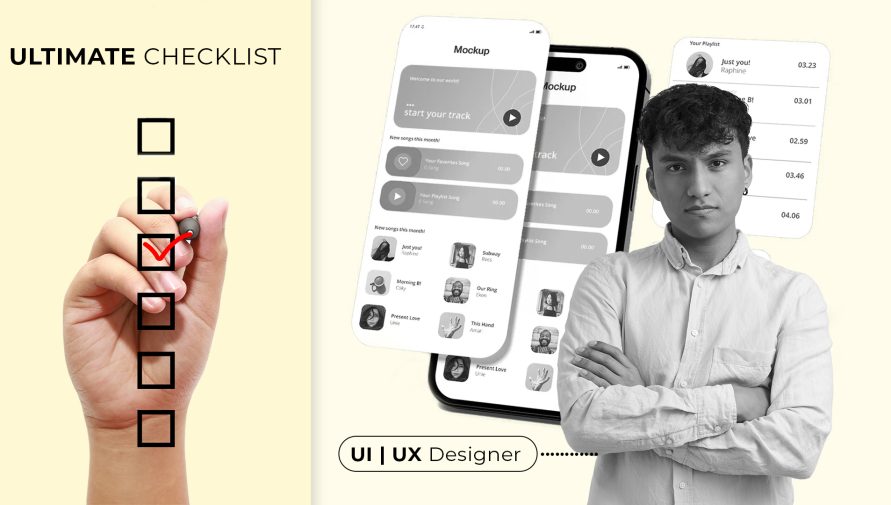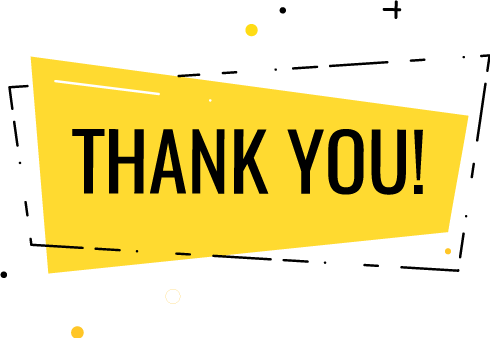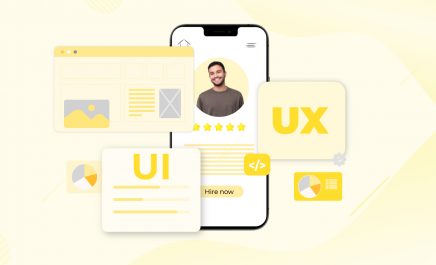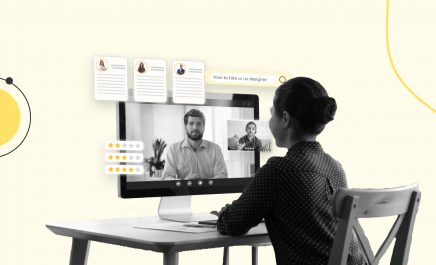The Ultimate Checklist for Hiring UI/UX Designers in 2025
- Shachi Dixit
- February 19, 2025
- 6 Minute Read

In 2025, exceptional design is vital for product success, significantly impacting user engagement, satisfaction, and business outcomes. UI/UX designers craft intuitive, visually appealing experiences that align with user requirements while supporting business objectives. For every $1 spent on improving UX, businesses earn $100 back, which is a 9,900% return on investment.
The role of UI/UX designers has evolved to include collaboration with development teams, leveraging analytics, and integrating emerging trends like AI-driven personalization. With an 8% projected growth in web developers and digital designers from 2023 to 2033, the demand for skilled professionals continues to rise.
However, hiring UI/UX designers in 2025 presents unique challenges. Finding candidates with expertise, adaptability, and cultural fit is increasingly competitive. This blog covers a comprehensive checklist to help businesses navigate the hiring landscape and secure top-tier talent effectively.
Step 1: Define Your Needs and Expectations
First, define your project requirements to hire UI/UX designers effectively in 2025. Decide whether your project requires long-term engagement for iterative updates or short-term support to accomplish certain tasks. Permanent hires suit long-term projects, while freelance designers are ideal for short-term needs.
Identify the specific skills required. UI-focused tasks need expertise in designing layouts and interactive elements, while UX projects demand skills like user research and usability testing. For holistic projects, look for professionals proficient in both UI and UX to deliver comprehensive solutions.
Additionally, designers should craft user-friendly interfaces that enhance experiences while achieving metrics like increased conversions and retention, ensuring both aesthetic and business success.
Step 2: Where to Search for Talented UI/UX Designers
Leveraging the right platforms and networks is crucial for hiring UI/UX designers in 2025.
With an average salary of $86,071 per year in the United States, businesses must balance cost, expertise, and project needs. This figure varies based on factors like experience, location, and roles and responsibilities of UI/UX designers.
Exploring diverse hiring avenues is essential to finding the right talent that aligns with your budget and project needs.
- Online platforms and job boards: Behance and Dribble showcase portfolios, while LinkedIn offers professional networks. Additionally, boards like AngelList and Wellfound are ideal for startups.
- Design agencies vs. freelancers: Agencies provide consistent quality for large projects, while freelancers are flexible and cost-effective for short-term tasks.
- Local vs. global talent pools: Local talent pools ensure seamless communication and cultural alignment, while global hiring through remote work offers access to competitive talent. Remote collaboration tools make it easy to integrate designers across diverse locations.
Step 3: Review Portfolios and Case Studies
Reviewing a designer’s portfolio provides valuable insights into their versatility and problem-solving capabilities.
- Assess the depth and diversity of the portfolio: Ask them to present different design styles for different industries, which will give you insight into their adaptability and creativity. Ensure their work fits your brand goals and aesthetics.
- Measurable business impact: The projects should have tangible results, such as increased user engagement, higher conversions, or improved retention rates. These metrics reflect the ability of the projects to connect design with business objectives.
- Knowing the value of UX case studies: UX case studies showcase the user-centered approach of a designer. They show how a designer identifies pain points, conducts research, and iteratively designs solutions to make the product more user-friendly and functional.
Step 4: Evaluate Technical Skills and Design Tools
Technical expertise is foundational for UI/UX designers, directly impacting the quality and feasibility of their work.
- Mastery of design tools: Proficiency in tools such as Figma, Adobe XD, and Sketch is important for making interactive and visually appealing prototypes. These tools will help you collaborate efficiently with other teams through streamlined workflows.
- Knowledge of front-end development: Familiarity with HTML, CSS, and JavaScript helps designers understand coding limitations and bridge the gap between design and development. This knowledge ensures that designs are both creative and technically feasible.
- User-centered design principles: Designers must excel in conducting user research, prioritizing accessibility, and iterating on designs to enhance usability. This focus aligns user needs with business goals, ensuring intuitive and impactful interfaces.
Step 5: Assess Soft Skills and Cultural Fit
Soft skills and cultural fit are crucial for UI/UX designers to contribute effectively to cross-functional team success.
- Communication and collaboration: Strong communication skills are essential for aligning with stakeholders and coordinating with developers, marketers, and product managers. Clear collaboration promotes seamless teamwork and ensures project success.
- Adaptability to trends and goals: Design practices and user needs constantly evolve. Designers should stay updated on the latest tools, techniques, and industry trends. Adaptability equips them to tackle current challenges and anticipate future ones effectively.
- Curiosity and passion for learning: Designers who actively seek feedback, experiment with ideas, and embrace challenges drive innovation and maintain impactful contributions. This proactive approach cultivate continuous improvement and relevance.
Step 6: Conduct Effective Interviews and Tests

Conducting thorough interviews and practical tests is essential to identify UI/UX designers who align with your project’s requirements. This step ensures you assess their expertise in creative and strategic design aspects.
- Key interview questions: Focus on assessing design experience, such as handling user feedback, overcoming challenges, and delivering impactful results.
- Testing problem-solving and design thinking: Provide real-world tasks like redesigning a user flow or optimizing an existing interface. This will showcase the students’ practical approach to challenges.
- Evaluating research, iteration, and feedback processes: Gauge how candidates incorporate user research and iterative designs into their workflows. Understanding their ability to refine solutions based on feedback ensures alignment with business goals and user needs.
Step 7: Consider the Designer’s Impact on Business Metrics
Understanding how a designer’s work influences key business metrics is crucial for evaluating their contribution to your project’s success. A strong designer creates value that resonates with both users and stakeholders.
- Evaluating design’s impact on KPIs: Assess how the designer’s work improves metrics like user engagement, conversion rates, and customer retention.
- Ensuring alignment with business outcomes: Verify that their design approach balances user satisfaction and business objectives, creating interfaces that drive measurable success.
- Linking usability to ROI: A well-designed product enhances user experiences, reduces churn, and supports growth, directly affecting the business’s bottom line.
Step 8: Determine the Budget and Compensation
Setting a realistic budget and understanding compensation expectations is vital to hiring the remote UI/UX designer for your project. A thoughtful approach ensures you attract top talent without overspending.
- Estimating costs based on experience levels: Junior designers typically cost less, while mid-level and senior professionals demand higher compensation for expertise.
- Geographic salary considerations: Salaries vary by location; hiring remotely from cost-effective regions can reduce expenses without compromising quality.
- Balancing budget and skills: Align your budget with project complexity to ensure skilled designers efficiently meet both creative and business needs.
Step 9: Finalizing the Hire and Onboarding

Once the ideal UI/UX designer is hired, it is crucial to integrate them into your team and projects seamlessly. A well-structured onboarding process ensures that the designer quickly adapts and contributes effectively to the team’s goals.
- Streamline the onboarding process to facilitate faster integration. To ensure a smooth transition, provide access to essential tools and project details and introduce them to the team.
- Outlining deliverables, timelines, and communication protocols clearly defines expectations and objectives. This alignment ensures that the designer’s efforts are in sync with business objectives.
- Encourage feedback and collaboration by creating an open environment where the designer feels supported. This approach enhances their ability to contribute meaningfully while aligning with the team’s workflow.
Conclusion: Making the Right Hire in 2025
Hiring UI/UX designers in 2025 should be strategic, ensuring quality for a longer period. This checklist, which includes defining the project’s needs and evaluating technical and soft skills, should accompany the business and ensure top talent. A well-rounded designer balances creativity with business objectives to enhance user satisfaction and ensure measurable outcomes.
Investing in the right designer pays off with high-quality product results. It also fuels the growth of your brand, ensuring continuous innovation and user engagement.
Frequently Asked Questions
What is the difference between a UI and a UX designer?
A UI designer focuses on the product’s visual aspects, such as colors, typography, and layouts. UX designers ensure the product is user-friendly by optimizing interactions and user journeys. Together, they deliver seamless digital experiences.
How do I know if a designer has the right experience for my project?
Review portfolios showcasing work similar to your project. Assess their expertise in relevant tools, problem-solving methods, and client testimonials that highlight their ability to meet business goals.
How do I evaluate a UI/UX designer’s portfolio?
Examine portfolio depth and diversity. Look for projects with measurable outcomes like increased engagement or conversions and detailed case studies explaining processes, challenges, and alignment with business objectives.
What technical skills should I look for in a UI/UX designer?
A skilled designer should master tools like Figma or Adobe XD, understand user-centered and responsive design principles, and have basic front-end knowledge to collaborate with developers effectively.

Thank you for submitting the details!
We will keep your information safe. Feel free to contact us with any questions at hello@uplers.com
Please check your email for next steps shared by Robert.

















